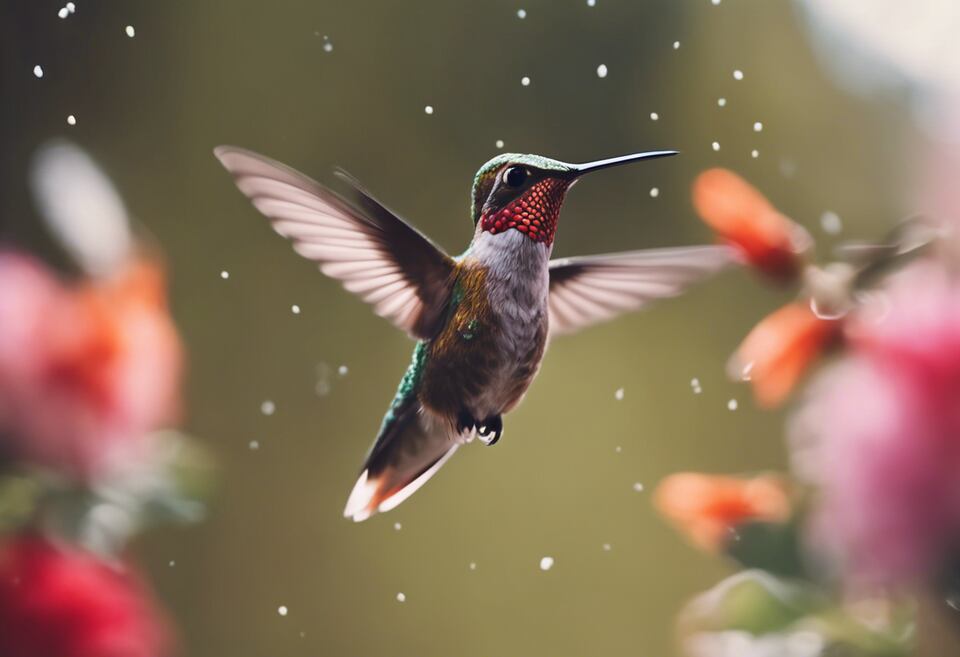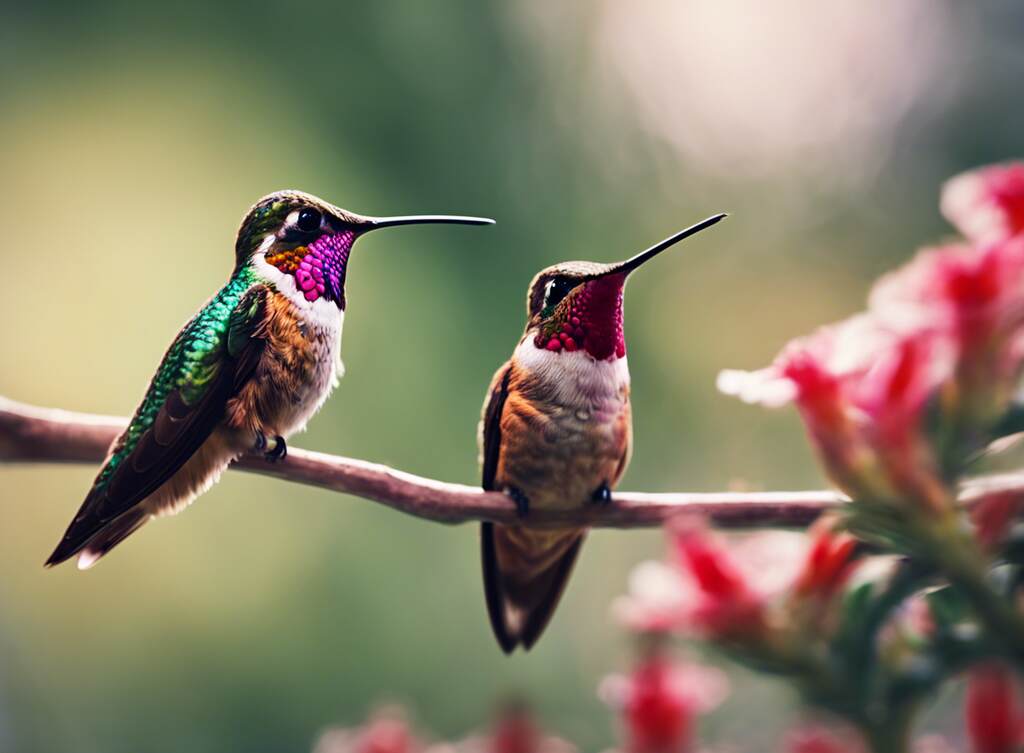Hummingbirds are fascinating creatures known for their vibrant colors, remarkable agility, and unique migratory patterns. Understanding when hummingbirds come out, particularly during their migration period, can provide valuable insights into these captivating birds’ behavior and habits. Let’s explore the timing of hummingbird migration patterns and explore the factors that influence their movements.
Table of Contents
The Timing of Hummingbird Migration Patterns
The Instinctive Journey of Hummingbirds
Hummingbirds are migratory birds that exhibit remarkable instincts when it comes to navigating their annual journeys. These tiny birds embark on extensive migrations, covering thousands of miles as they travel between their breeding and wintering grounds. The timing of hummingbird migration is closely linked to environmental cues, particularly changes in daylight length and food availability.
Spring Migration: A Time of Renewal
In North America, hummingbirds begin their spring migration when the days start to lengthen and the temperatures become milder. As early as late February or early March, depending on their habitat, hummingbirds start their northward journey from their wintering grounds in Central America and Mexico. The return of hummingbirds in spring is eagerly awaited by bird watchers and enthusiasts who set up feeders and gardens to welcome these delightful visitors.
Summer Stay: Nesting and Breeding Season
Upon reaching their breeding grounds, hummingbirds engage in courtship displays and nesting activities. The summer months are a busy time for these tiny birds as they establish territories, build intricate nests using plant fibers and spider silk, and lay their eggs. Hummingbirds are meticulous parents, with females taking on the primary responsibility of incubating the eggs while males fiercely defend their territory.
Fall Migration: Preparing for the Journey South
As summer transitions to fall and daylight hours decrease, hummingbirds start preparing for their journey south. The fall migration of hummingbirds is a critical period as these birds need to replenish their energy reserves for the long flight ahead. Natural food sources, such as nectar-rich flowers and insects, become essential for hummingbirds to fuel up before they embark on their southward migration.
Winter Retreat: Seeking Warmer Climes
During the winter months, hummingbirds from North America migrate to warmer regions in Central America and Mexico to escape the harsh winter conditions. The timing of hummingbird migration southward varies but generally peaks in late summer and early fall. These wintering grounds provide hummingbirds with a more temperate climate and abundant food sources, allowing them to survive the winter months until it’s time to head back north in spring.
Conservation and Observation Opportunities
Understanding the timing of hummingbird migration not only offers insights into these birds’ behavior but also presents opportunities for conservation efforts and scientific research. By tracking hummingbird migration patterns, researchers can gain valuable information to support habitat conservation initiatives and better protect these remarkable birds.
The timing of hummingbird migration is a complex and awe-inspiring phenomenon that showcases the resilience and adaptability of these tiny creatures. Whether they are embarking on long journeys across continents or delighting us with their aerial acrobatics in our backyard, hummingbirds continue to capture our imagination and remind us of the beauty of the natural world.

Attracting Hummingbirds to Your Garden
Hummingbirds are fascinating creatures that can bring life and beauty to any garden. If you are looking to attract these tiny, vibrant birds to your outdoor space, there are several key steps you can take to make your garden a welcoming environment for them.
Creating a Hummingbird-Friendly Habitat
To attract hummingbirds to your garden, it is essential to create a habitat that meets their specific needs. Hummingbirds are attracted to bright colors, so planting an array of colorful flowers such as trumpet vine, bee balm, and salvia can help draw them in. Additionally, incorporating a variety of flower shapes can cater to different species of hummingbirds with varying bill lengths.
Providing Food Sources
One of the most critical aspects of attracting hummingbirds is providing an adequate food source for them. Planting nectar-rich flowers is a great way to offer these birds a natural food source. You can also put up feeders filled with a mixture of water and sugar (4 parts water to 1 part sugar) to supplement their diet. It is essential to clean these feeders regularly to prevent mold growth and keep the hummingbirds healthy.
Ensuring Water Availability
In addition to food sources, hummingbirds also need access to clean water for drinking and bathing. Consider adding a birdbath or a small water feature to your garden to provide them with a place to hydrate and clean themselves. Remember to change the water frequently to prevent the spread of diseases.
Creating Shelter and Nesting Opportunities
Hummingbirds need shelter and safe spaces to build their nests. Planting shrubs and trees can offer them protective cover from predators and the elements. You can also hang small baskets or nesting material in your garden to provide them with materials for nest-building.
Understanding Migration Patterns
It is essential to be aware of the migration patterns of hummingbirds in your region. Hummingbirds typically migrate to warmer climates during the winter months and return to their breeding grounds in the spring. By understanding their migration schedule, you can prepare your garden to welcome them back each year.
Final Thoughts
Attracting hummingbirds to your garden can be a rewarding experience that allows you to observe these beautiful creatures up close. By creating a hummingbird-friendly habitat with the right plants, food sources, water, and shelter, you can make your garden a haven for these incredible birds. With some careful planning and maintenance, you can enjoy the sight of hummingbirds fluttering around your garden throughout the year.
Conclusion
As we explore the timing of hummingbird migration patterns and ways to attract these delightful creatures to our gardens, we gain a deeper appreciation for the grace and beauty they bring to our natural surroundings. By understanding when hummingbirds come out during different seasons and the factors that influence their behavior, we can better prepare to welcome them with open arms.
When it comes to the timing of hummingbird migration patterns, it is essential to recognize the significant variations that exist among species. While some hummingbirds are year-round residents in certain regions, others embark on incredible journeys spanning thousands of miles to reach their breeding grounds. By staying informed about the specific species present in your area and their migratory patterns, you can anticipate their arrival and ensure that your garden is ready to provide a welcoming oasis for these tiny marvels of nature.
Attracting hummingbirds to your garden involves creating a hospitable environment that meets their essential needs. Planting a diverse array of nectar-rich flowers such as bee balm, salvia, and trumpet vine can provide a vital food source for hummingbirds throughout the seasons. Additionally, incorporating feeders filled with a simple sugar solution can supplement their nectar intake, especially during periods of high energy expenditure such as migration and breeding.
To further enhance the appeal of your garden to hummingbirds, consider adding perches for these agile fliers to rest between feeding frenzies. Providing a water source, such as a shallow birdbath or mister, can also attract hummingbirds looking to quench their thirst and bathe. Creating a safe and inviting habitat free from pesticides and with ample shelter from predators will help establish your garden as a favored destination for hummingbirds seeking sustenance and respite.
By taking the time to learn about the timing of hummingbird migration patterns and adopting practices to attract them to our gardens, we foster a harmonious relationship with these captivating creatures. Not only do we benefit from witnessing their aerial acrobatics and vibrant plumage, but we also play a crucial role in supporting their wellbeing and conservation. As we marvel at the sight of hummingbirds flitting among the flowers and darting through the air, we are reminded of the delicate balance of nature and our responsibility to protect and preserve it for future generations to enjoy.
The enchanting world of hummingbirds offers us a glimpse into the wonders of the natural world, where beauty and resilience converge in the form of these tiny yet remarkable birds. By respecting their migration patterns and creating inviting spaces in our gardens, we invite the magic of hummingbirds into our lives and forge a meaningful connection with the intricate web of life that surrounds us.
Let us savor each moment spent in the company of these celestial creatures and take to heart the lessons they impart about grace, determination, and the joy of simply being.



